
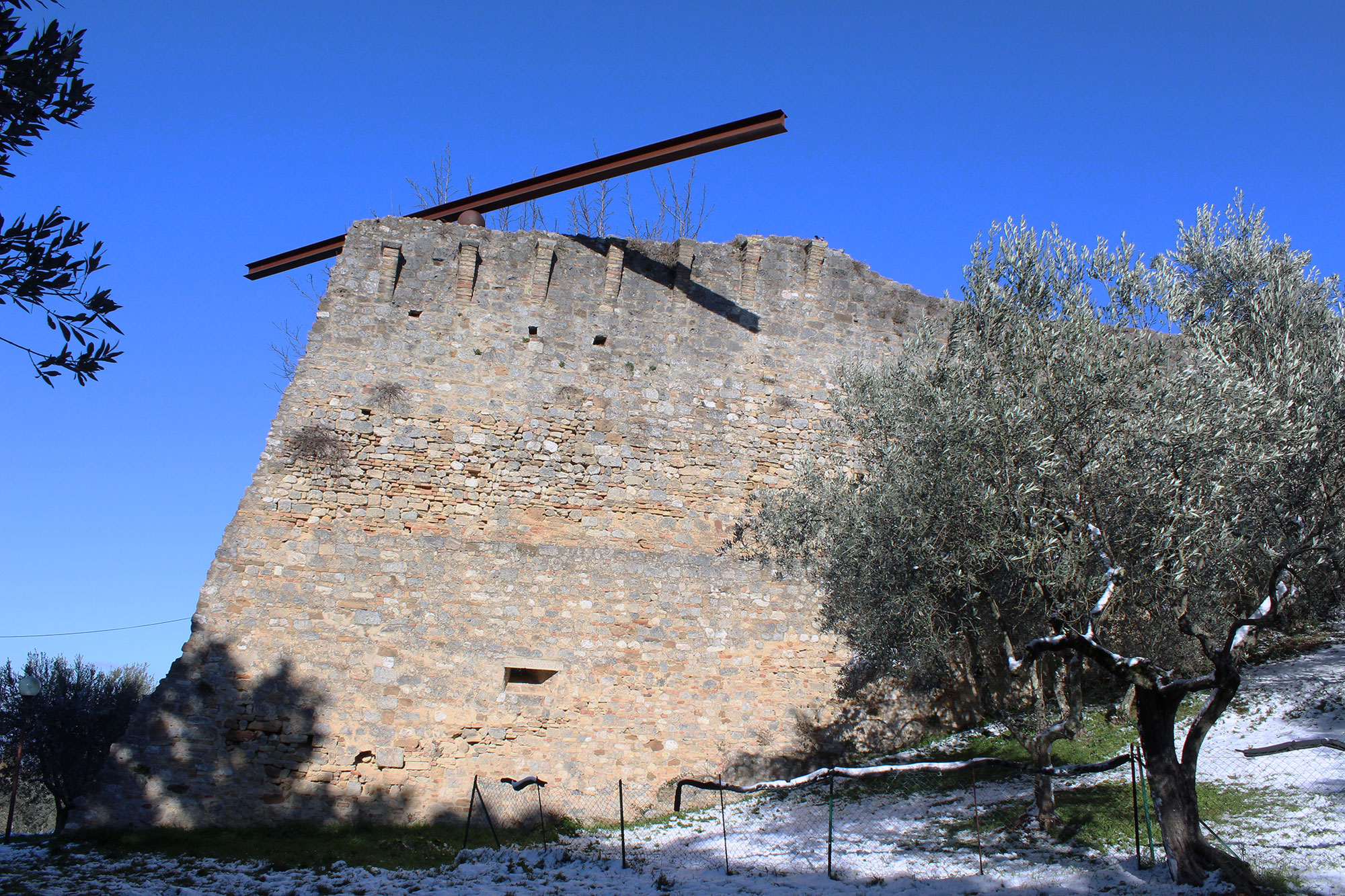
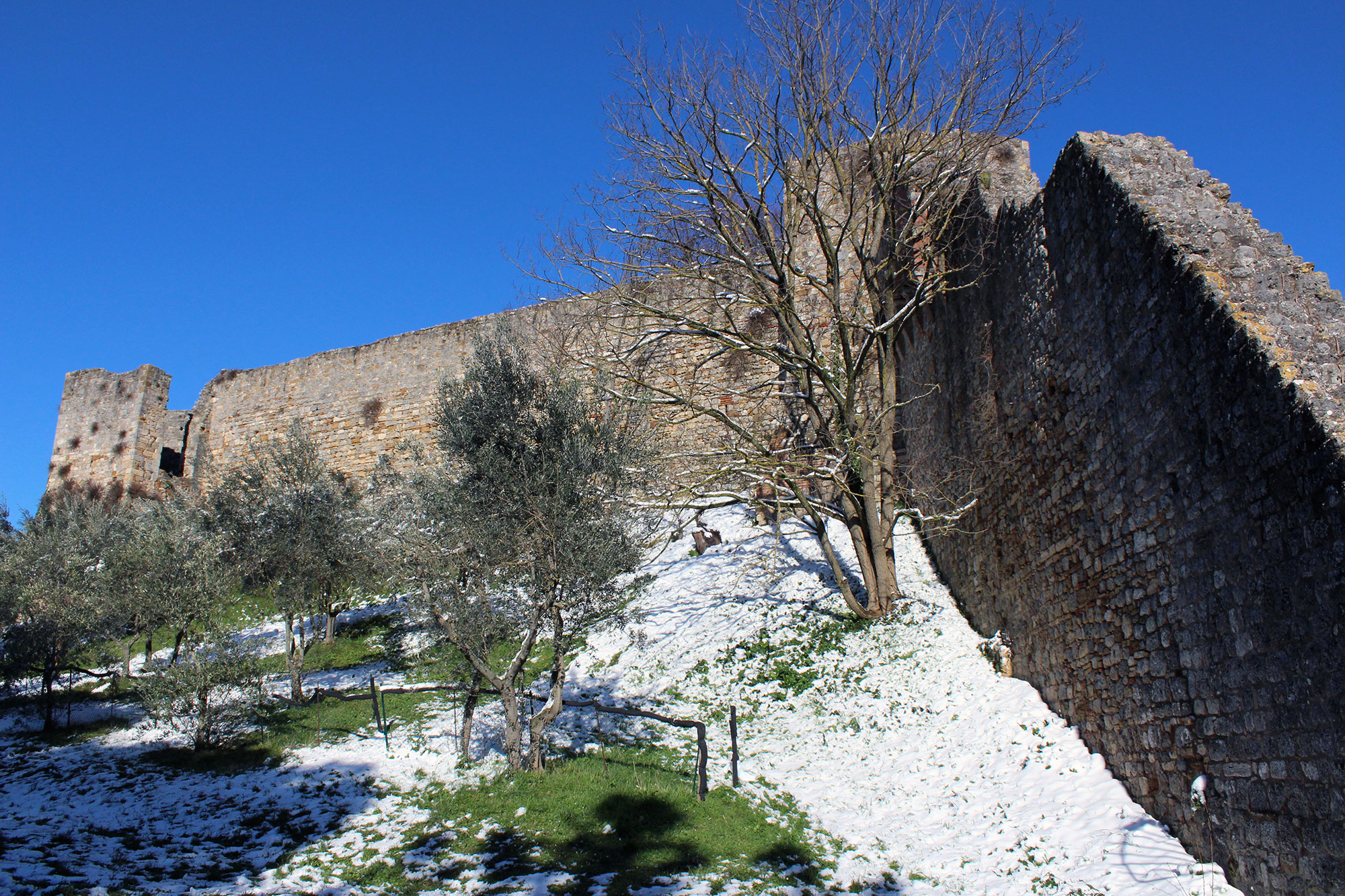


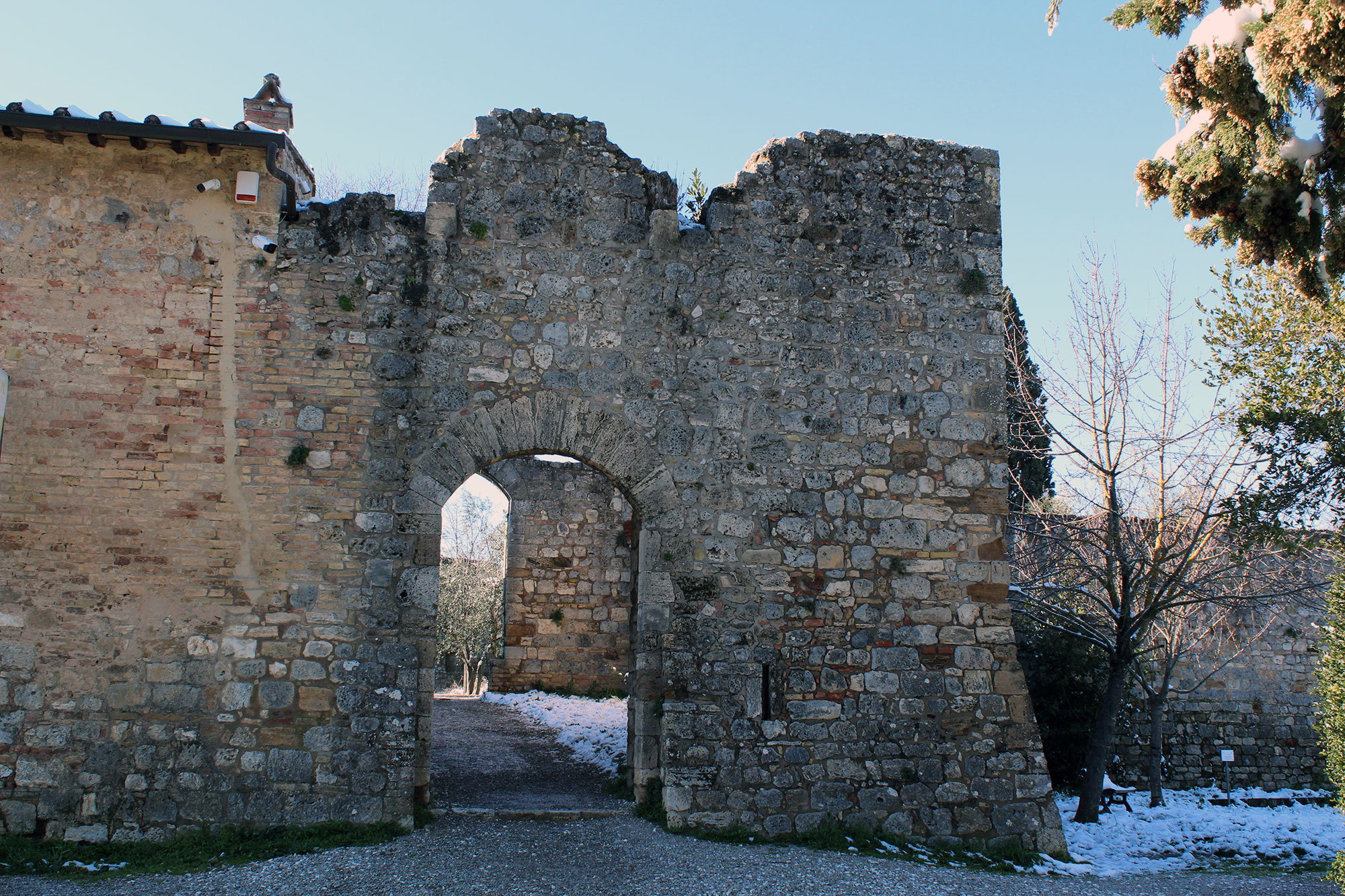
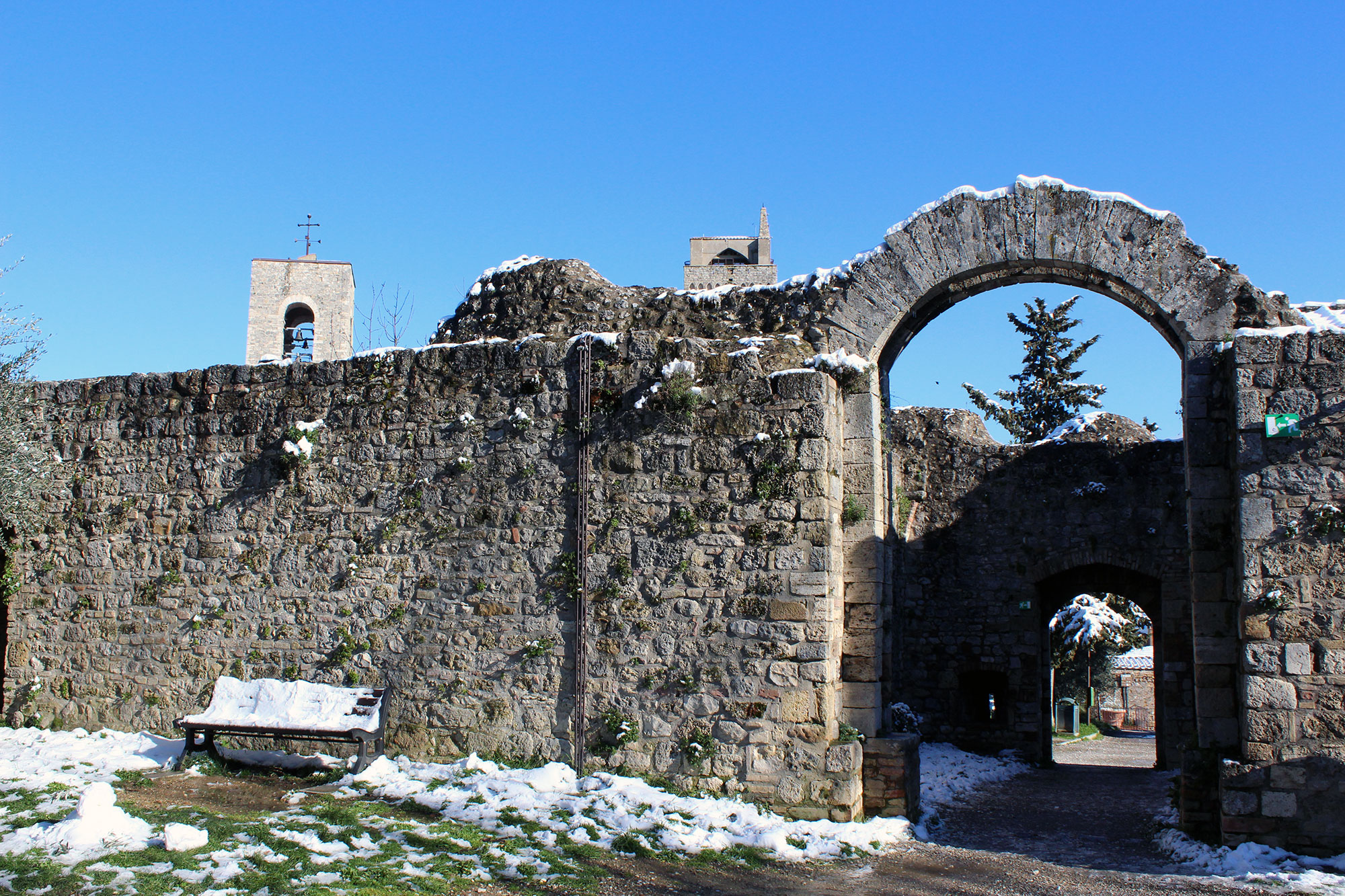
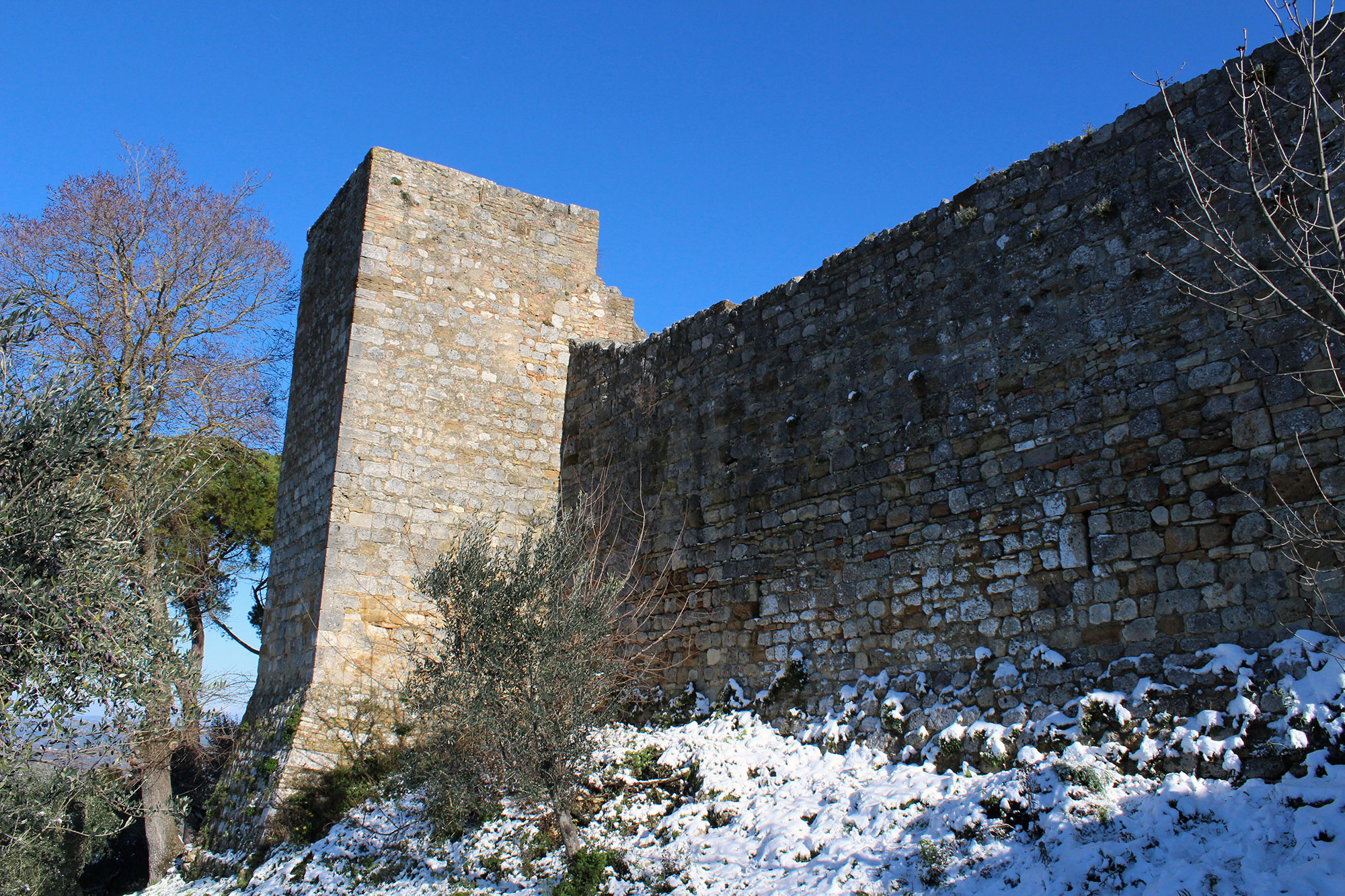
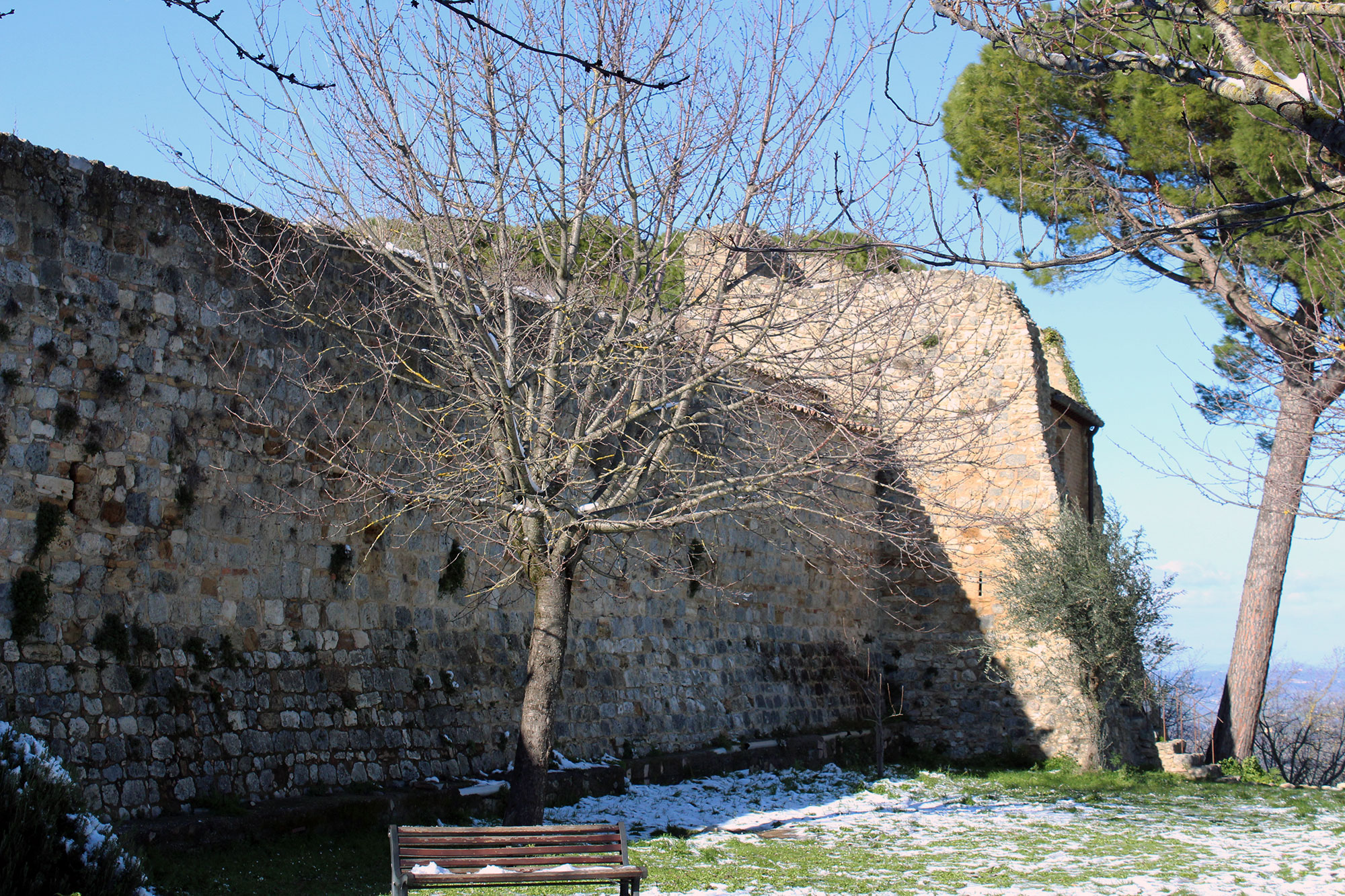
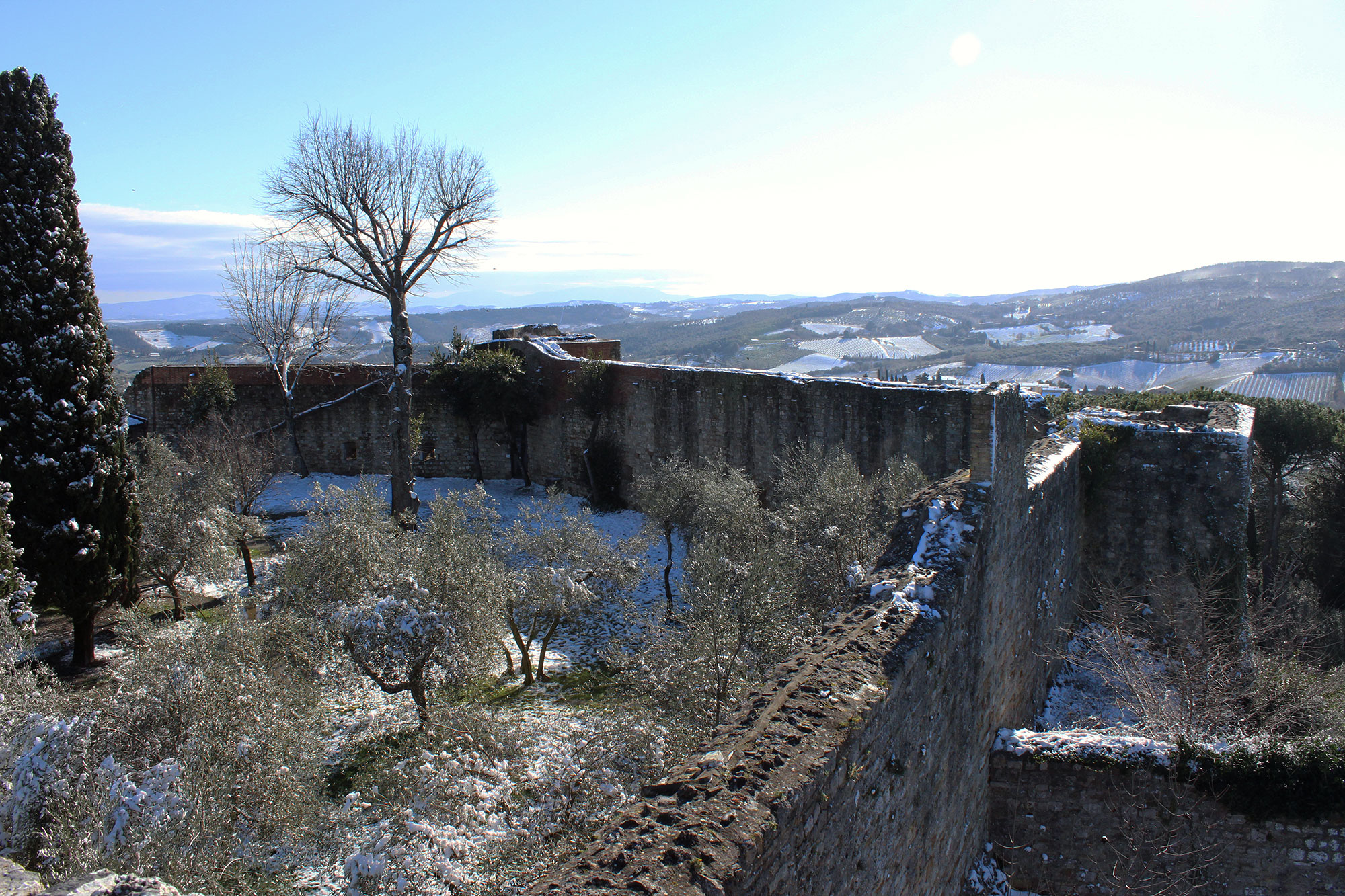
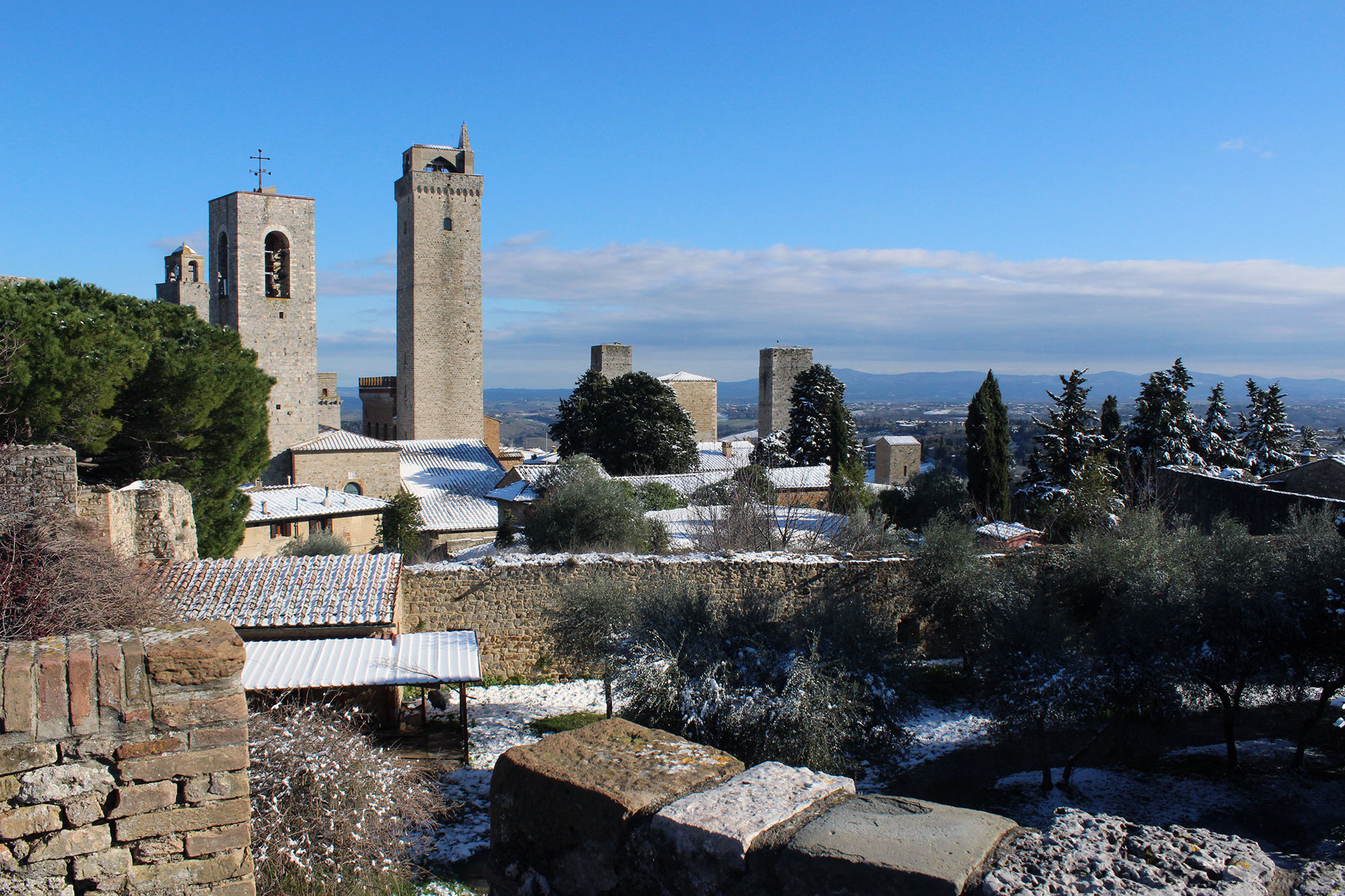
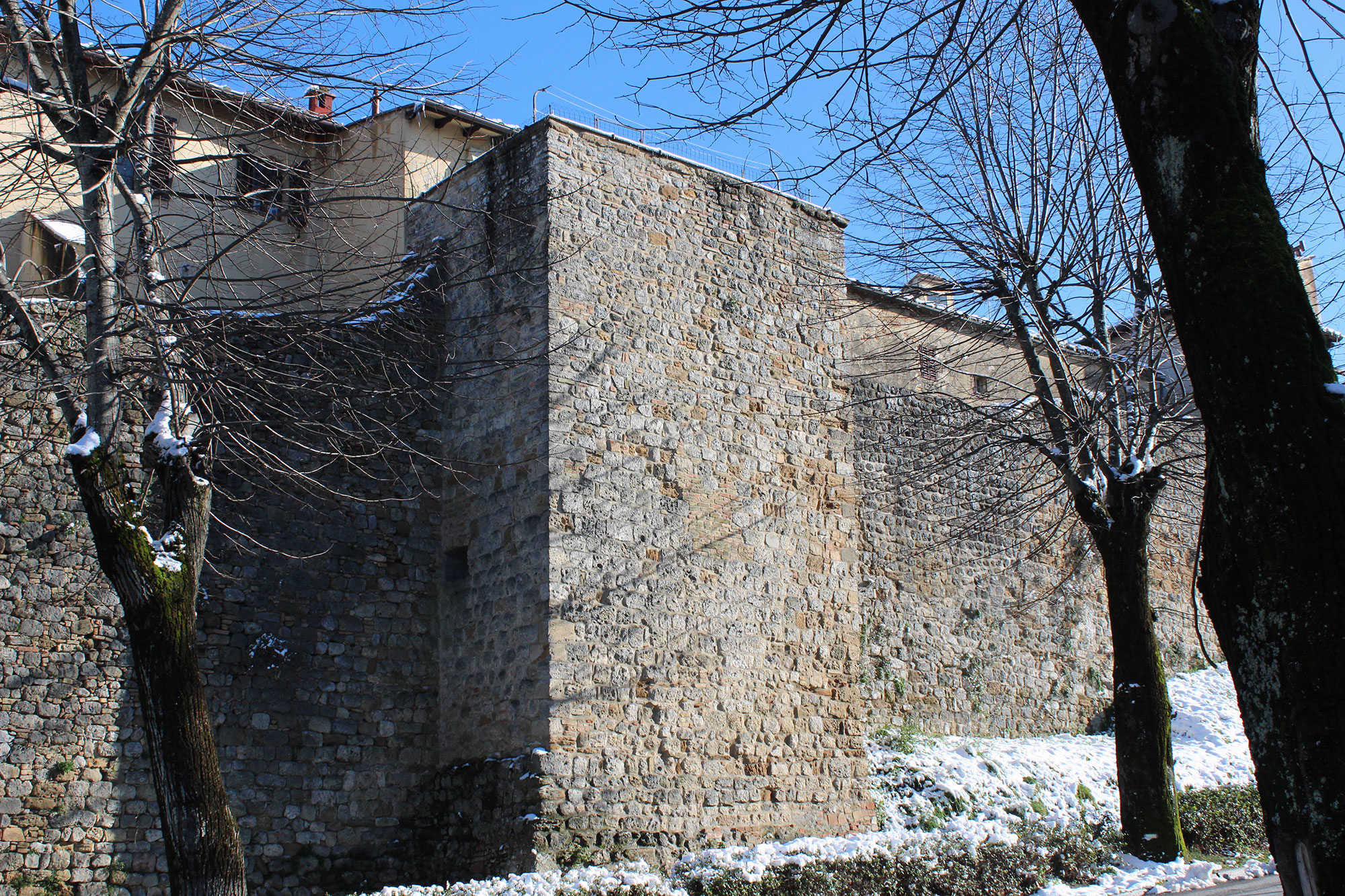

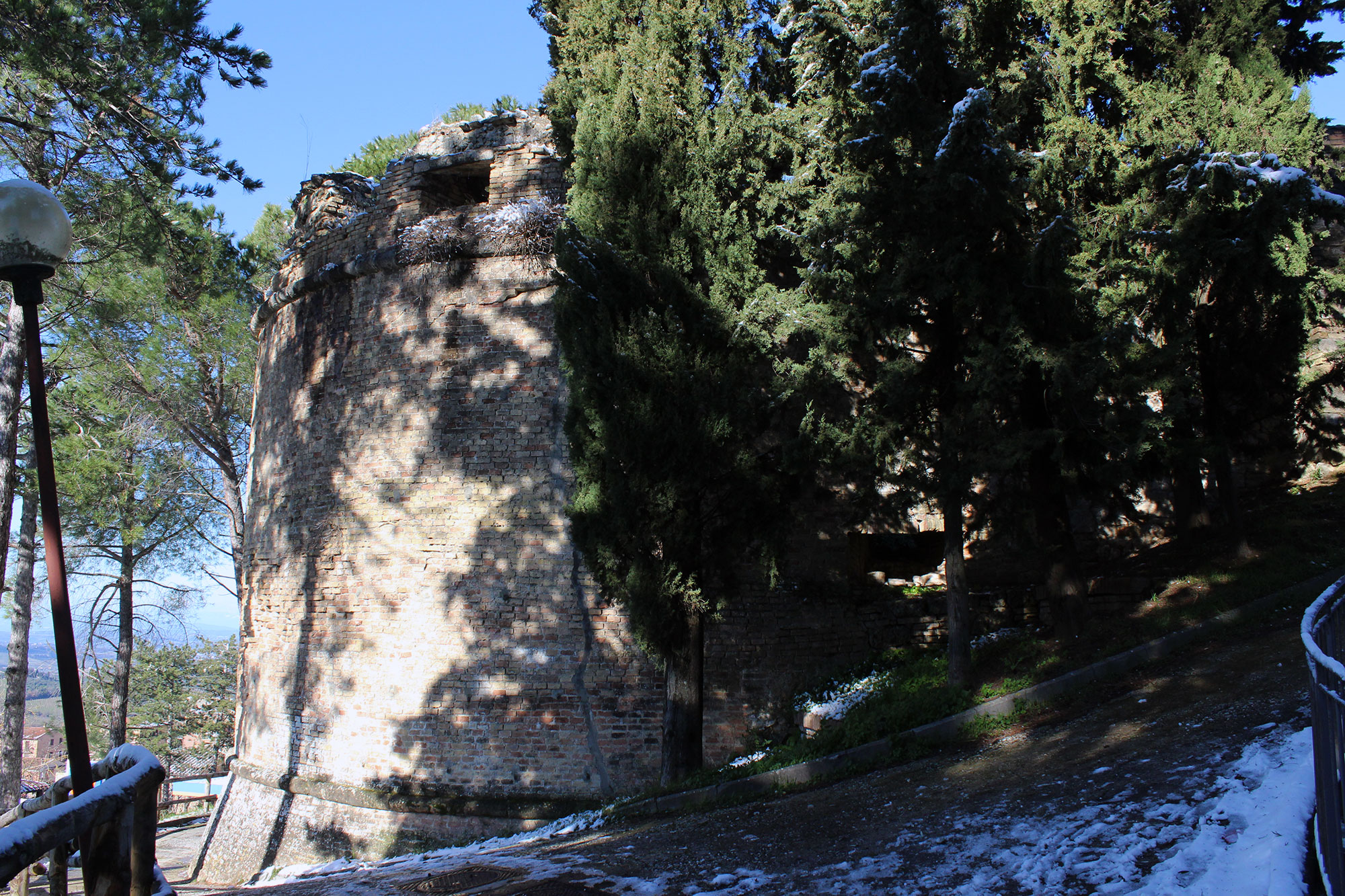

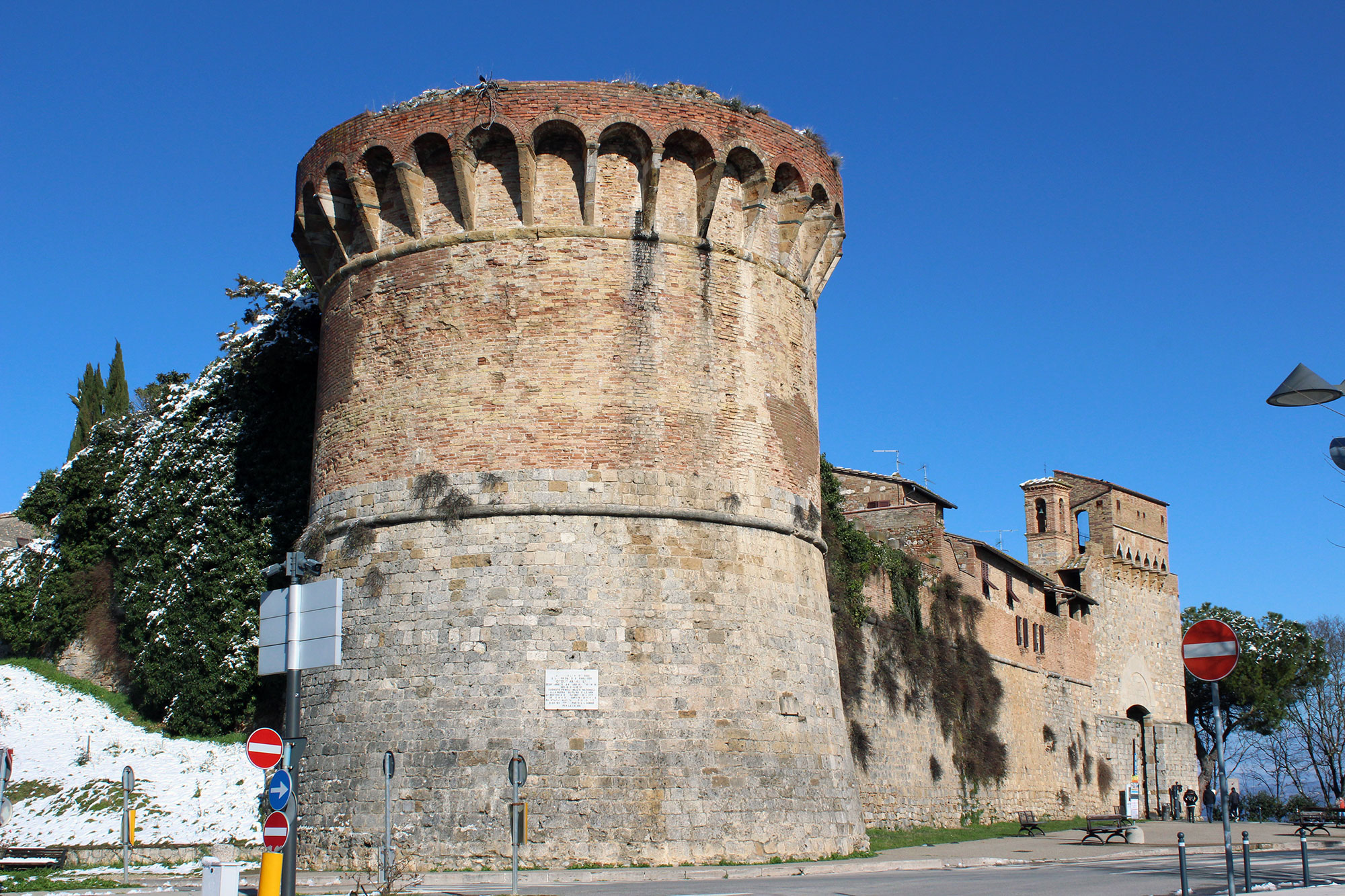

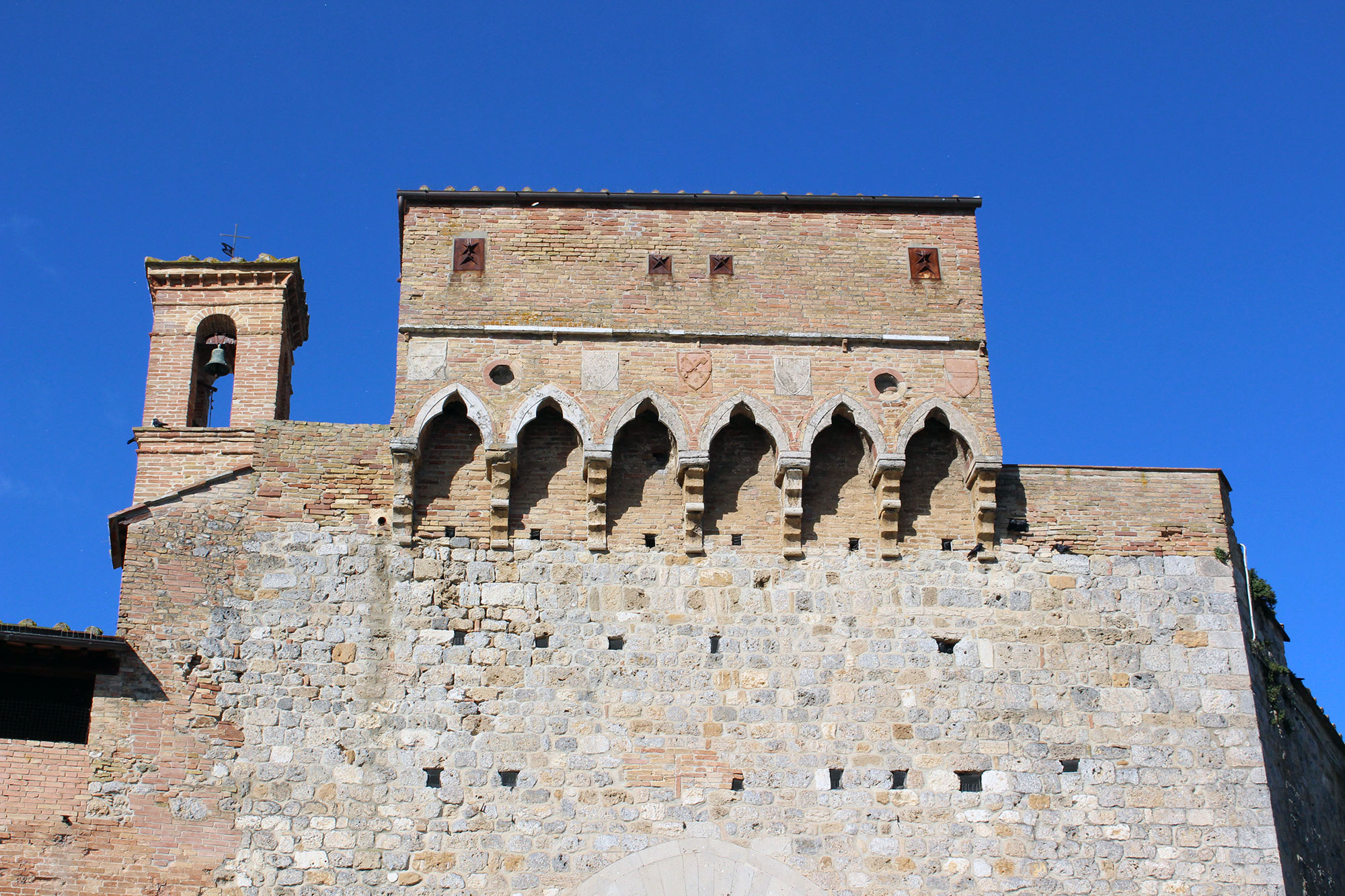




















How to reach
The medieval village of San Gimignano rises on a hill 56 km south of Florence. It can be easily reached following the Florence-Siena highway until the exit 'Poggibonsi Nord', from here starts the indications that lead to us under the town walls.
History
From every angle of the town of San Gimignano the appearance is medieval: road, public square, civil, religious or military constructions. A visitor that for the first time walks into an alley of stone or bricks would believe that they have been cast back in time to a village crystallized in the 14th century. In this page I will only illustrate the history of this place through its fortifications.
Situated on a hill of 324 meters, at the watershed between the Elsa and the Era Valleys, earth of ancient settlements with archeological discoveries span from those of the ancient Etruscan period to the Late Roman Imperial Age, important center on the Roman road Clodia first and of the Via Francigena (as testified by Sigerico of Canterbury 990-994), San Gimignano always served a major role in the history of this area. Since its ancient history San Gimignano was under the jurisdiction of the nearby and powerful city of Volterra and was first under the control of the Bishops of that same city. In the Middle Ages, taking advantage of the wealth that arrived in the city from the Francigena and because of its position at the borders between Siena and Florence, together with the political weakening of Volterra, the zone of the Val d' Elsa was an ideal theater for the development of local autonomy. In San Gimignano the economy of the merchants grew into a powerful force that led to the emergence of a great city.
The first nucleus of the city was located on the 'Poggio della Torre' (Tower Hill) - where the ancient residence of the Bishop of Volterra rose - and on the 'Poggio di Montestaffoli', where a Rocca was later constructed. In the year 998 the suburbs were encircled with the first walled enclosure. The war against Volterra began in the 1130 and approximately twenty years after San Gimignano was virtually independent, allied with Florence against the neighbors of Poggibonsi and Colle Val D'Elsa. In 1207 the new town-walls (today in still in part recognizable in the city center) were built incorporating the villages of S.Matteo and S.Giovanni. Three gates of these town-walls still remain: to north the 'Arco Di Goro', to east the magnificent 'Arco de' Becci' still equipped with machicolation and to the west the arches in stone of S.Matteo.
In 1229 the historical alliance of San Gimignano with the Florence became stronger. In these years the city skyline of Saint Gimignano was studded with numerous towers, symbols and testimonies to the fortune of the families that possessed them, and still today the city is known throughout the world as 'San Gimignano dalle belle torri' (San Gimignano with the beautiful towers). In the 13th century there 72 towers, but today only have 14 survived.
In the year 1251 San Gimignano was endowed with new town-walls to encompass the new quarters. They comprised the one of Montestaffoli, with the two main gates placed on the road Francigena, San Giovanni and San Matteo, completed in the 1262. The circuit formed from high and thick walls in stone, coming from the nearby quarry of Pecille, with square towers reinforceing some features and with hollow towers at other points. The gates were equipped with breteche and outside the walls the defense was completed by deep ditches. These walls are still today nearly complete with all their gates: S.Giovanni, S.Matteo, 'Delle Fonti', Quercecchio and S.Jacopo.
Some in fighting between the powerful families of the Salvucci and the Ardinghelli destabilized the government. Consequently in the year 1343 San Gimignano fell under the political administration of Florence; in 1348 the Florentines acquired the Poggio della Torre and in the 1353 they took complete control on the city. Immediately a new rocca was constructed, on the hill of Montestaffoli. It was completed in the 1358. In order to make place for the new fortifications theconvent of the Dominican Order was demolished and transferred. The Rocca was erected on the existing town walls using the same stone with an irregular trapezoidal shape. The vertex of the trapeze was endowed with a 'spur' tower and it was the only part of rocca outside the trace of the city walls, while the now destroyed keep and high tower was within the walls faced the town. Two other square towers closed the other two sides. From the one still intact we can admire today a splendid panorama on the city towers.
Other additions and modifications to the fortifications were done until 1470, and the most important ones included the town-walls five circular towers constructed in bricks and equipped with machicolation supported by brackets in stone. At the conclusion of the war with Siena, in the 1555, the duke Cosimo de Medici ordered the dismantling of the Rocca and the other fortified structures of San Gimignano. That work was carried on until 1558. However, San Gimignano has retained its feudal atmosphere and appearance. The city also contains masterpieces of 14th and 15th century Italian art and is in the UNESCO World Heritage List.
More info & notes